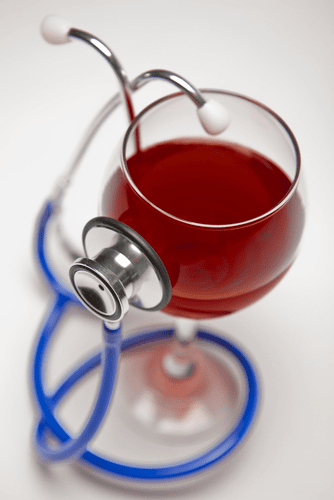Contents
WP 3 is a health-economic study on the cost of XR-NTX treatment in study participants compared to treatment with buprenorphine or buprenorphine-naloxone in the controls. Registry-based information will be collected based on participants’ personal identity number . A dose of 50 mg once daily is recommended for most patients. The placebo-controlled studies that demonstrated the efficacy of Naltrekson as an adjunctive treatment of alcoholism used a dose regimen of Naltrekson 50 mg once daily for up to 12 weeks. Other dose regimens or durations of therapy were not evaluated in these trials.

Controls will be compared with study participants on psycho-social aspects of recovery and mental and somatic health. Naltrexone was first synthesized in 1963 by Metossian at Endo Laboratories, a small pharmaceutical company in New York City. It was characterized by Blumberg, Dayton, and Wolf in 1965 and was found to be an orally active, long-acting, and very potent opioid antagonist. The drug showed advantages over earlier opioid antagonists such as cyclazocine, nalorphine, and naloxone, including its oral activity, a long duration of action allowing for once-daily administration, and a lack of dysphoria, and was selected for further development. It was patented by Endo Laboratories in 1967 under the developmental code name EN-1639A and Endo Laboratories was acquired by DuPont in 1969.[self-published source?
Special patient populations
Although no causal relationship with relapse prevention plan and early warning signs is suspected, physicians should be aware that treatment with Naltrekson does not reduce the risk of suicide in these patients. A flexible approach to a dosing regimen may need to be employed in cases of supervised administration. Thus, patients may receive 50 mg of Naltrekson every weekday with a 100 mg dose on Saturday, 100 mg every other day, or 150 mg every third day. The degree of blockade produced by Naltrekson may be reduced by these extended dosing intervals. If you are giving this medication to yourself at home, learn all preparation and usage instructions from your health care professional. Before using, check this product visually for particles or discoloration.

] Clinical trials for opioid dependence began in 1973, and a developmental collaboration of DuPont with the National Institute on Drug Abuse for this indication started the next year in 1974. The drug was approved by the FDA for the oral treatment of opioid dependence in 1984, with the brand name Trexan, and for the oral treatment of alcohol dependence in 1995, when the brand name was changed by DuPont to Revia. A depot formulation for intramuscular injection was approved by the FDA under the brand name Vivitrol for alcohol dependence in 2006 and opioid dependence in 2010. Depression is highly comorbid with obesity and is universally undertreated.51 Bupropion is an excellent antidepressant, while naltrexone is not reported to have a mood effect. Thus, the naltrexone–bupropion combination, which includes an effective antidepressant dose of bupropion, may be the ideal weight loss drug for this population. Furthermore, all antidepressants have the ability to induce mania, including in patients with previously unknown bipolar disease.53,54 It might be beneficial to collaborate with a psychiatrist in the care of such patients.
Long Acting Naltrexone for Opioid Addiction: Focus on Sustained Abstinence and Recovery (NaltRec)
The manufacturer has also marketed directly to law enforcement and criminal justice officials, spending millions of dollars on lobbying and providing thousands of free doses to jails and prisons. The technique has been successful, with the criminal justice system in 43 states now incorporating long-acting naltrexone. Blockade of MORs is thought to be the mechanism of action of naltrexone in the which mental disorder is most commonly comorbid with alcoholism management of opioid dependence—it reversibly blocks or attenuates the effects of opioids. It is also thought to be involved in the effectiveness of naltrexone in alcohol dependence by reducing the euphoric effects of alcohol. The role of KOR modulation by naltrexone in its effectiveness for alcohol dependence is unclear but this action may also be involved based on theory and animal studies.
Guidelines from the World Health Organization cite evidence of superiority in reducing mortality and retaining patients in care with opioid agonists , concluding that most patients should be advised to use agonists rather than antagonists like naltrexone. Patients transitioning from buprenorphine or methadone may be vulnerable to precipitation of withdrawal symptoms for as long as 2 weeks. Healthcare providers should be prepared to manage withdrawal symptomatically with non-opioid medications. Substance abusing patients are clearly another unique challenge. Other than opiate abusers, there is no absolute contraindication.
During pregnancy, this medication should be used only when clearly needed. Do not drive, use machinery, or do anything that needs alertness until you can do it safely. Naltrexone is the generic name of the drug and its INN, USAN, BAN, DCF, and DCIT, while naltrexone hydrochloride is its USP and BANM. Naltrexone should not be used by persons with acute hepatitis or liver failure, or those with recent opioid use (typically 7–10 days).
In a small number of people, mild opiate withdrawal symptoms may occur, including abdominal cramps, restlessness, bone/joint pain, muscle aches, and runny nose. If any of these effects last or get worse, tell your doctor or pharmacist promptly. Dosage is based on your medical condition and response to treatment. Your doctor may start you at a lower dose and monitor you for any side effects or withdrawal symptoms before increasing your dose. Do not increase your dose, take it more often, or stop taking it without your doctor’s approval.
Naltrexone
This enables the body to expend energy stores, namely, the adipose tissue in the human body. To lose weight, patients, simply put, need to decrease their calorie intake and increase their energy consumption through expanded physical activity. Various forms of extreme calorie reduction and extreme exercising have been found to be very effective. The problem is that very few obese/overweight people can adequately follow these diets and exercise routines, and even fewer people can sustain them over long periods of time. Thus, extreme dieting and exercise are efficacious in study conditions, but are not necessarily effective in practice or at the population level. According to one review, naltrexone and acamprosate have strong evidence and are recommended as treatment options for alcohol dependence in conjunction with behavioral therapy.
- Physical dependence may lead to withdrawal side effects if treatment is stopped suddenly.
- In 2022, 4 studies with a few hundred patients are experimenting using the drug for the treatment of Long COVID.
- The drug was approved by the FDA for the oral treatment of opioid dependence in 1984, with the brand name Trexan, and for the oral treatment of alcohol dependence in 1995, when the brand name was changed by DuPont to Revia.
- Substance abusing patients are clearly another unique challenge.
Patients taking Naltrekson may not benefit from opioid containing medicines, such as cough and cold preparations, antidiarrheal preparations, and opioid analgesics. In an emergency situation when opioid analgesia must be administered to a patient receiving Naltrekson, the amount of opioid required may be greater than usual, and the resulting respiratory depression may be deeper and more prolonged. Lethargy and somnolence have been reported following doses of Naltrekson and thioridazine.
The opioid receptors are involved in neuroendocrine regulation. MOR agonists produce increases in levels of prolactin and decreases in levels of luteinizing hormone and testosterone. Naltrexone influences the hypothalamic–pituitary–adrenal axis probably through interference with opioid receptor signaling by endorphins. The Sinclair method is a method involving opiate antagonists such as naltrexone to treat alcoholism. The person takes the medication once, about an hour before consuming alcohol, to curb the urge to drink.
Changing how the world understands and treats cancer
These medications are not devoid of serious side effects, however, and careful patient selection can reduce dramatic complications and increase positive outcomes. This paper reviews existing weight loss clinical trials with bupropion and the bupropion–naltrexone combination. Additionally, the rationale for the suggested patient selection and clinical strategies for special patient populations are discussed. The study was funded by the Boston-based biotech Alkermes firm which produces and markets naltrexone in the United States. Critics charged that the study violated ethical guidelines, since it compared the formulation of naltrexone not to the best available, evidence-based treatment , but to a placebo.
Vivitrol, a naltrexone formulation for depot injection containing 380 mg of the medication per vial, is also available. Additionally, naltrexone subcutaneous implants that are surgically implanted are available. While these are manufactured in Australia, they are not authorized for use within Australia, but only for export. By 2009, naltrexone implants showed superior efficacy in the treatment of heroin dependence when compared to the oral form.
This study is designed as an open-label evaluation of how treatment with XR-NTX may influence the quality and speed of recovery of opioid dependent individuals – in a context of a naturalistic clinical treatment of opioid dependence. The study will assess recovery outcomes and compare these with the clinical effectiveness of XR-NTX . Further, the study will assess the recovery outcomes in matched controls receiving treatment with buprenorphine or buprenorphine-naloxone and enrolled in the national OMT program, and compare this with participants receiving XR-NTX.
It is also marketed in combination with bupropion (naltrexone/bupropion) as Contrave, and was marketed with morphine (morphine/naltrexone) as Embeda. A combination of naltrexone with buprenorphine (buprenorphine/naltrexone) has been developed, but has not been marketed. Naltrexone levels following a 50 mg oral dose of naltrexone at steady state during treatment with 50 mg/day naltrexone. Naltrexone is available and most commonly used in the form of an oral tablet .
The author would urge caution and objective drug screening in this group of patients. Intramuscular extended release Naltrexone is a medication approved by the Food and Drug Administration to treat both Opioid Use Disorder and Alcohol Use Disorder . Naltrexone can be prescribed and administered by any practitioner licensed to prescribe medications, and is available in a pill form for Alcohol Use disorder or as an extended-release intramuscular injectable for AUD and OUD.
Alcohol Treatment
Because endogenous opioids are involved in the brain reward system, it would be reasonable to hypothesize that naltrexone might produce anhedonic or dysphoric effects. Although some evidence from small, early trials suggested that patients with a history of opiate dependence might be susceptible to dysphoric effects in response to naltrexone (Crowley et al. 1985; Hollister et al. 1981), reports of such effects have been inconsistent. Most large clinical studies of recovering opioid-dependent individuals have not found naltrexone to have an adverse effect on mood (Greenstein et al. 1984; Malcolm et al. 1987; Miotto et al. 2002; Shufman et al. 1994).
Patients who receive excessive calories from alcohol
Additional forms of counseling and/or monitoring may be recommended during treatment with can i drink alcohol during pregnancy oral. Naltrekson is not a cure for drug addiction or alcoholism. Naltrekson injection is used to prevent relapse in people who became dependent on opioid medicine and then stopped using it. Naltrekson can help keep you from feeling a “need” to use the opioid.






Recent Comments